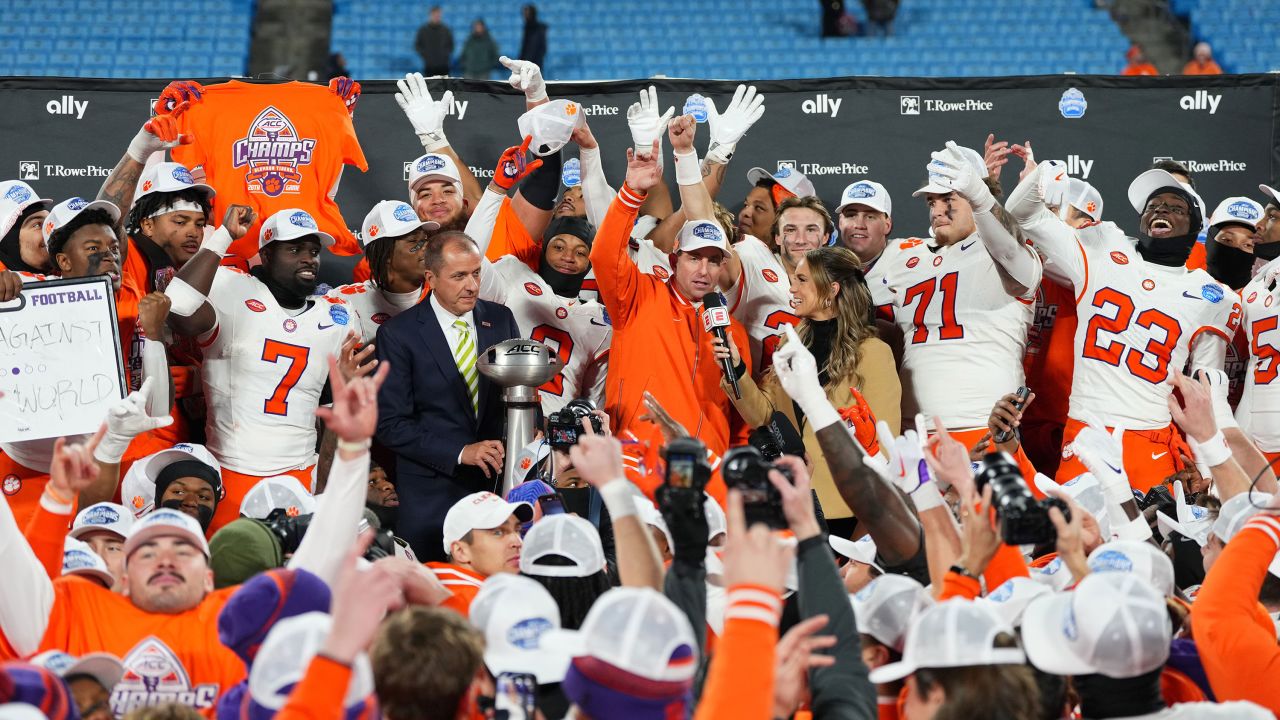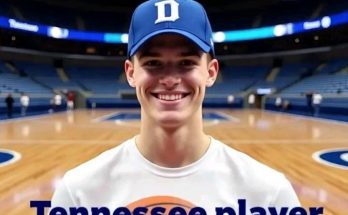Every year, as the college football offseason winds down and teams prepare for the battle ahead, fans, analysts, and pundits alike eagerly anticipate the release of preseason College Football Playoff (CFP) predictions. These predictions, often generated by a combination of computer models, expert opinions, and media speculation, set the stage for the conversations, debates, and controversies that will consume the sport over the next several months. Yet, with the release of the latest batch of CFP projections, an unmistakable wave of outrage has swept across the fan base, stirring emotions from coast to coast and igniting fierce debates across social media platforms, sports radio shows, and even among casual viewers. The central question on everyone’s lips is: why are the preseason predictions so wildly off base, and why have they caused such a backlash?
The very nature of preseason predictions is inherently speculative. No team has yet played a game in the new season, rosters are still in flux due to transfers, injuries, and new coaching hires, and there is no way to definitively know how players will perform or how schemes will evolve. Still, the CFP committee’s predictions and various media outlets’ early top-four projections carry significant weight, often shaping narratives and expectations for teams months before the first kickoff. For fans, especially those whose teams have been slighted, the projections are more than just forecasts—they feel like pronouncements that validate or invalidate the hopes and dreams of entire fan bases. Thus, when these preseason projections seem misguided, biased, or downright unfair, outrage is almost inevitable.
One of the biggest sources of fan anger this year stems from the perceived disregard for certain powerhouse programs traditionally considered elite. Despite strong finishes last season, impressive recruiting classes, and returning key players, some storied programs found themselves conspicuously absent from the preseason top four. Fans of these teams reacted with disbelief, frustration, and even anger. Many argued that the projections ignore the historical consistency and program culture that have been built over decades. For them, it feels as though the respected giants of college football are being prematurely dismissed by analysts who might be chasing narratives or reacting to last-minute developments without fully appreciating the long-term strength of these teams.
Conversely, other programs, sometimes with less established pedigrees or coming off mediocre seasons, were elevated to top-tier status in these preseason projections. This sparked accusations of favoritism and media hype-driven rankings. Fans accused analysts of overvaluing flashy new coaches, superstar transfers, or early hype around unproven players, rather than relying on a holistic evaluation of team strength and schedule difficulty. The perception that some programs are being handed favorable treatment due to market size, media presence, or recent highlight-reel moments further inflamed the fan base. The skepticism was especially pronounced among fans of mid-major schools or those from power conferences who feel that these early rankings distort the competitive landscape and undermine the spirit of fair competition.
Social media became the battleground for this controversy, with hashtags trending nationwide as fans vented their frustrations. Platforms like Twitter and TikTok exploded with passionate rants, memes mocking the analysts and committees responsible for the projections, and heated debates about the merits of the teams included or excluded from the top four. For many, the outrage was also personal. Fans invest time, energy, and identity into their favorite teams; when those teams are overlooked or misjudged, it feels like a direct challenge to their loyalty and fandom. This emotional connection amplifies the reaction beyond simple disagreement into full-blown outrage.
A significant dimension to the outrage relates to the influence of the transfer portal and NIL (Name, Image, and Likeness) deals on preseason expectations. The transfer portal has dramatically reshaped college football rosters in recent years, creating greater unpredictability in team strength from one season to the next. Fans felt that the projections either overemphasized or underappreciated the impact of key transfers. For example, some teams loaded with high-profile transfers were predicted to dominate, despite limited evidence of cohesion or chemistry. Meanwhile, teams that chose continuity and development over splashing the portal were sometimes penalized in the rankings. Similarly, NIL money, which enables some programs to attract top athletes with lucrative endorsements, introduced an extra layer of complexity. Fans criticized projections for appearing to reward programs perceived as NIL powerhouses, even when on-field performance from the previous season did not fully justify the lofty expectations.
Another contentious point was the role of strength of schedule in the preseason predictions. Fans of teams with difficult schedules felt that analysts failed to adequately account for the challenges their teams would face. Conversely, fans whose teams had comparatively easier paths viewed preseason rankings as inflated or undeserved. This disconnect between perceived difficulty of schedules and the resulting rankings fueled accusations that projections are overly simplistic or biased toward certain conferences or geographic regions. The debate over strength of schedule is as old as college football itself, but in this preseason cycle, it seemed particularly heated and divisive.
The controversy also exposed deeper questions about the CFP selection process itself. The CFP committee is charged with creating a fair and transparent path to the national championship, but preseason predictions often feel opaque and unaccountable. Fans called for more clarity on how preseason rankings are determined and greater transparency regarding the criteria used to evaluate teams before any games have been played. Some even suggested expanding the playoff field to reduce the impact of early predictions on the eventual postseason landscape. This frustration is compounded by the high stakes involved—teams outside the preseason top four face an uphill battle to break into the playoff, while those already favored enjoy a perceived cushion. For fans of underdog teams, the preseason rankings can feel like a self-fulfilling prophecy that limits opportunities and narrows the path to glory.
Media personalities and analysts responded to the backlash with varying degrees of openness and defensiveness. Some acknowledged the limitations of preseason predictions and emphasized that these rankings are best viewed as educated guesses rather than guarantees. Others doubled down on their projections, citing advanced analytics, recruitment data, and insider information as justification for their assessments. The back-and-forth only intensified fan emotions, as supporters of different teams rallied behind their own preferred voices and distrusted those they viewed as biased or out of touch. The media ecosystem surrounding college football thus became a microcosm of the larger culture wars in sports fandom, where trust, credibility, and identity play crucial roles.
For the athletes and coaches, the preseason uproar can be both motivating and distracting. Coaches often downplay preseason rankings publicly, focusing on preparation, practice, and internal goals rather than media hype. However, some admit in private that being overlooked can fuel a chip-on-the-shoulder mentality that propels teams to overperform. Conversely, teams projected as top contenders feel the weight of expectation and pressure to deliver. For players, especially those hoping to showcase their talents to scouts and fans, preseason rankings can affect confidence and morale. While the season itself ultimately determines success, the shadow of preseason controversy lingers, shaping narratives and storylines as the games unfold.
The broader college football landscape is also affected by these preseason debates. High-profile controversies keep the sport in the spotlight, drawing attention from casual viewers and driving ratings for networks and streaming services. Rivalries are stoked, ticket sales boosted, and social media engagement skyrockets. In this sense, the outrage over preseason CFP predictions becomes a kind of spectacle, serving both as a point of contention and a marketing opportunity. Yet, there is a risk that persistent dissatisfaction erodes faith in the system and diminishes the credibility of the playoff format, leading to calls for reform or alternative championship methods.
As the regular season approaches, the challenge for fans is to balance passion with perspective. While outrage can be a natural and even healthy part of fandom, it is important to remember the inherent unpredictability of sports and the many variables at play. Injuries, breakout performances, coaching adjustments, and sheer luck can all dramatically alter the trajectory of a season. Preseason predictions, for all their flaws, provide a starting point for conversation but should not be viewed as definitive judgments. The true test of a team’s worth is measured on the field, in the heat of competition, not in the speculative realm of projections.
Ultimately, the latest preseason College Football Playoff predictions have revealed as much about the fervor of college football fandom as they have about the teams themselves. The intensity of the outrage underscores how deeply fans care, how invested they are in their teams’ success, and how much power narratives hold in shaping perceptions. It also highlights the challenges faced by those who try to predict and analyze a sport that is as dynamic and unpredictable as college football. While the backlash may prompt some reflection among analysts and the CFP committee, it also ensures that the debate—and the passion—will continue right up to the final whistle of the season’s last game.
In the end, college football thrives on rivalry, drama, and the clash of expectations versus reality. The preseason outrage over CFP predictions is just another chapter in that ongoing saga, a reminder that in this sport, passion is never in short supply, and the quest for glory is never straightforward. Fans will continue to debate, argue, and protest their viewpoints, but as always, the game itself will decide who truly belongs at the top and who was merely a victim of early hype or harsh dismissal. Until then, the outrage will simmer, fueling the energy and emotion that make college football one of the most beloved and unpredictable spectacles in American sports.



